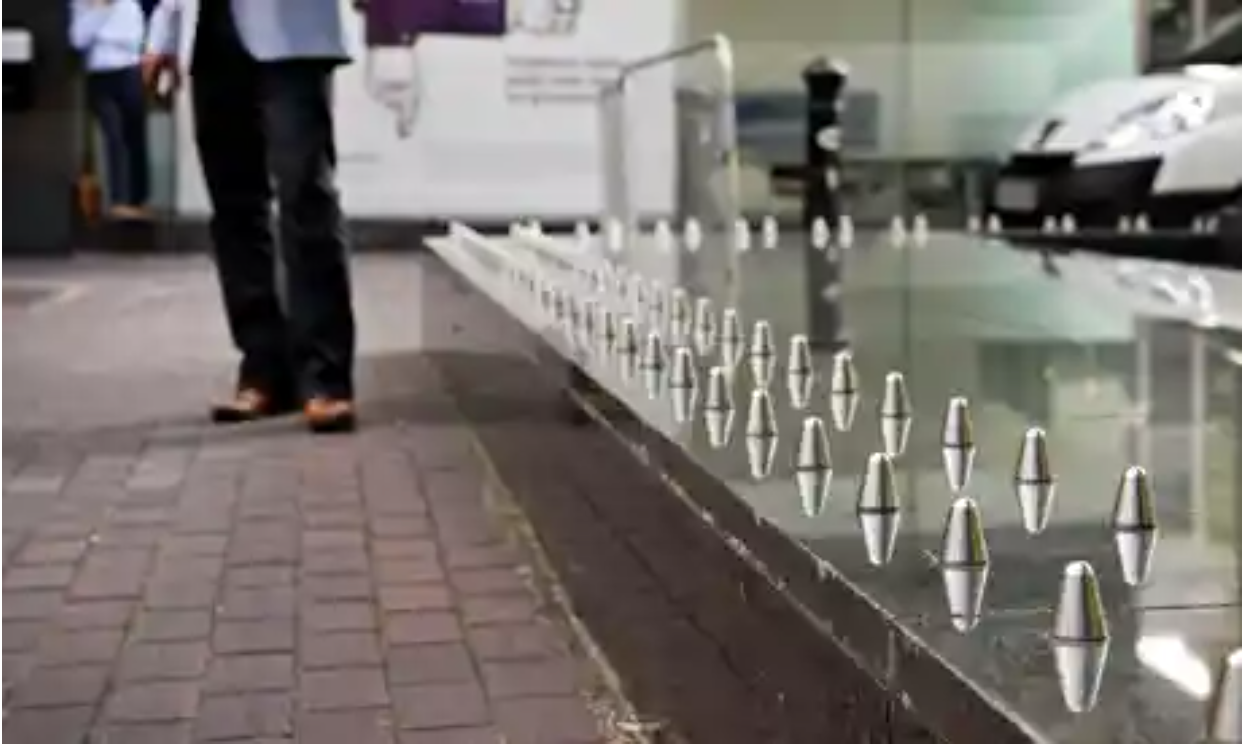

How to use design to make public spaces unusable and unappealing
source link: https://uxdesign.cc/busting-ass-in-the-city-6debe95f803c
Go to the source link to view the article. You can view the picture content, updated content and better typesetting reading experience. If the link is broken, please click the button below to view the snapshot at that time.

Example #1: The Hard to Ignore Details
Below are various examples of how this strategy has taken form in cities around the world.





This popular option of adding spikes, balls, or anything that makes sitting quite intolerable to a ledge or any flat surface is a well-used tactic by city government’s and businesses to deter sitting. While some try to hide their intentions through art (1st and 5th image), most are just unapologetically ugly and intimidating. Not only do they make a usable and inviting space unusable and unappealing, but they are also an added cost for the local government or business.
Example #2: The Leaning Bar



This second kind of example is a betrayal of sorts as it looks like it could provide some form of relief but in the end, one comes to realize that it's no better than leaning against a wall. These leaning bars are quite prevalent and seem to be most popular in public transport stops. In my research, there were a few reasons (or excuses) as to why they were installed instead of benches. In NYC, they said that they save space and argued that a full-on bench was unnecessary as commuters aren’t waiting very long. In Madrid, they stated that they are for those commuters who are unable to completely sit and stand and therefore need ischiatic support. While I have no way to know if these reasons are valid, I believe it is important that governments listen to their commuters and take action on the demand for more comfortable public seating.
Example #3: Shapes and Materials



This next style of hostile seating relies on uncomfortable shapes and materials to prevent their benches from being used. In all of the images above, the material used is metal, which is a material that makes sitting intolerable during the hotter and colder months. The shape of the bench is also a characteristic that designers use to avoid their seating from being too comfortable. Some classic ways are by providing little to no back support, the smallest of surface areas to sit on, and a surface area that is too curved.
Example #4: The Smaller the Better?



Related to the previous example, this example highlights the popular use of limiting sit-able surface area, therefore, making the experience unbearable for long periods of rest. This is a popular choice as it requires less space and accordingly (to an extent) less money. While maybe comfortable for a child, these small seating options are not friendly for the majority of residents and just become another waste of resources and money.
Example #5: Creativity at its Worst
The Pay & Sit Bench

Uncomfortable and expensive, this next example adds monetization to the equation and for no resident's benefit. The image above is actually an art installation that protests the privatization of public amenities by creating a bench where one has to pay to use, an idea so crazy that it makes one rethink how logical the privatization of public amenities is. Seemingly an insane idea to implement in the real world, it has been reported that Yantai Park in Shangdong province in eastern China has taken this idea and put it into action. While this story could be false as I was unable to find any true proof (photos, videos) it still is a haunting story of a potential future where we have to pay to sit comfortably.
No bench at all — “Ghost amenities”

The term “ghost amenities” was coined by public space researcher Tara Chellew to describe the absence of amenities in public spaces. “This lack of amenities is done to cut costs, reduce maintenance and reduce vandalism and loitering, but it also disproportionately affects a lot of people who are vulnerable,” explains Chellew. “The lack of benches, the lack of places that offer up shade and shelter, the lack of public washrooms — all these things should be available in public spaces to make them more comfortable and human-centered.” What’s even worse than an uncomfortable bench is no bench at all but even so, governments are too tempted by the “advantages” of not providing any amenities at all.
The Camden Bench

This last example serves as a bridge to our last section, the homeless, as it does prove to be a somewhat comfortable place to sit for a large portion of residents. However, it still does very well in targeting another subset of the population which they deem to act in an “anti-social and criminal behaviour that typically plague city centre benches”. Expensive with much thought and time put into it, the famous Camden bench is one of the best symbols of all the time, money, and creative problem solving that has been lost to hostile architecture.
Recommend
About Joyk
Aggregate valuable and interesting links.
Joyk means Joy of geeK